Amazon Q How to Become a Codeless Serverless Gen AI Virtual Assistant — SitePoint

Key points:
- This article will introduce readers to AWS’s latest serverless products. Amazon Qand the capabilities it provides businesses.
- Learn step-by-step how to build a generative AI assistant that uses Amazon Q (Business Edition) to extract insights from PDFs stored in an S3 bucket.
- Readers will learn about the various flavors of Amazon Q (Business) as well as a feature comparison matrix as deciding factors for their next business use case.
- Learn more about available serverless integration options Amazon Q (Business).
- Introduction to Amazon Q (Developer).
Amazon Q
Amazon Q is an AI-powered generative assistant tailored to revolutionize business operations. It is a completely codeless serverless solution from the AWS platform. It is designed to integrate seamlessly with enterprise systems and data. Amazon Q businesses empower employees by enhancing their ability to search for information, solve complex problems, and complete tasks efficiently.
From guiding enterprise workflows to enabling advanced problem solving, Amazon Q is a versatile tool that brings AI-driven intelligence to the core of organizational processes.
Amazon Q for developers improves engineer and developer productivity through automated code generation, code review, and writing boilerplate template code from scratch to minimize development effort. More than just a productivity assistant, Amazon Q stands out for its ability to create, test, and debug computer code, making it a valuable asset to technology teams.
Amazon Q offers two specialized products:
- Amazon Q for Developers
Designed for developers and IT professionals, the product focuses on the software development life cycle (SDLC), streamlining the development and testing process through intelligent insights and automation. - Amazon Q Business Edition
Targeted at enterprise employees and business analysts, the product improves productivity by simplifying access to enterprise data, improving decision-making and automating routine tasks.
Amazon Q is more than a tool; it’s an advanced solution that reshapes the way businesses and their employees interact with technology to run smarter, faster, and smarter.
In addition to the above two products, Q also supports the following integrations with popular serverless components by integrating AI-based smart assistants.
Other serverless integration pipelines for Amazon Q:
Amazon Q and Amazon QuickSight
Amazon Q enhances Amazon QuickSight, AWS’ unified business intelligence (BI) service, by introducing advanced generative AI capabilities. Through Amazon Q, business analysts can easily build BI dashboards, visualizations, and complex calculations using natural language, reducing development time to minutes. This integration enables employees to craft customizable data stories and explore insights beyond traditional dashboards.
Amazon Q and Amazon Connect
Amazon Q transforms Amazon Connect, AWS’s cloud-based contact center solution, by embedding generative AI capabilities to improve customer service. It analyzes live customer conversations and relevant company content to recommend accurate actions or responses for agents.
This results in faster, more personal and more accurate customer interactions. With Amazon Q, businesses can reduce wait times, improve customer satisfaction, and reduce service costs while providing superior support through artificial intelligence-powered virtual assistants.
Amazon Q and AWS Supply Chain
Amazon Q integrates with AWS Supply Chain to bring AI-driven insights to supply chain management. It empowers inventory managers, planners and supply chain professionals to ask questions and get smart, data-backed answers.
By integrating data from multiple systems, Amazon Q can highlight trends, predict outcomes, and explain cause-and-effect relationships. Teams can simulate what-if scenarios, evaluate trade-offs, and make informed decisions to optimize global supply chains and ensure efficiency and resiliency.
Amazon Q Business offers a variety of index types and user subscription plans, allowing you to customize your application environment by combining different options to meet your business needs.
Amazon Q – Business comparison matrix for various styles:
| Amazon Q Business Lite | Amazon Q Business Pro |
| The Lite subscription offers basic features and is ideal for users looking for basic functionality:
Permission aware response:Ask questions and get secure, contextual answers.Data integration: Securely connect Amazon Q Business to your business knowledge and data. conversational interface: Responses are customized to fit on a single page for fast, concise information retrieval. Seamless enterprise login: Simplify access with secure, enterprise-grade single sign-on (SSO). |
Premier subscription offers an advanced feature set for a comprehensive experience:
Full feature access: Unlocks all Amazon Q Business features, including Amazon Q Apps and integration with Amazon Q in QuickSight (Reader Pro). enhance response: Receive seven pages of in-depth, permission-aware responses in a conversational interface.content creation: Quickly generate new content to support business needs. Data insights: Use Amazon Q in QuickSight (Reader Pro) to analyze uploaded archives and gain actionable insights. Custom plug-in: Extend functionality with custom plug-ins to meet specific requirements. |
Amazon Q Apps (exclusive to Pro plan)
- Application creation: Easily create, publish and share custom applications.
- Source selection: Select and configure data sources for each app card to meet unique use cases.
- API integration: Leverage APIs to build and consume output from Amazon Q Apps to enhance automation and workflow efficiency.
| exponential | ability | detail |
| Getting Started Index | – Single Availability Zone | – Ideal for proof-of-concept (PoC) and developer workloads. |
| – Cost effective | – Deployed in a single Availability Zone to reduce costs and suitable for non-production use cases. | |
| Enterprise Index | – Multi-zone redundancy | – Deployed across three Availability Zones for high availability and reliability, ideal for production workloads. |
| – Extensible | – Adjust the number of indexing units based on the number of files to be indexed, ensuring flexibility to meet growing or changing business needs. |
Data integration with Amazon Q Business
Amazon Q Business Source Connectors make it easy to collect data from disparate sources into a centralized system. With minimal setup, these connectors work with Adobe Experience Manager, Alfresco, Aurora (MySQL and PostgreSQL), Amazon FSx (Windows and NetApp ONTAP), Amazon RDS, Amazon S3, Amazon WorkDocs, Confluence, Dropbox, and more Seamless platform integration. This simplifies the process of creating AI-driven solutions while ensuring businesses can effectively use data from multiple sources.
Quick step by step A guide to building a Gen AI-driven Using the Amazon Q for Business Assistant
In the following steps, I’ll follow the steps to build a simple QnA application based on Amazon Q.
Step one: Launch Amazon Q for Business from the AWS Management Console and click Start.
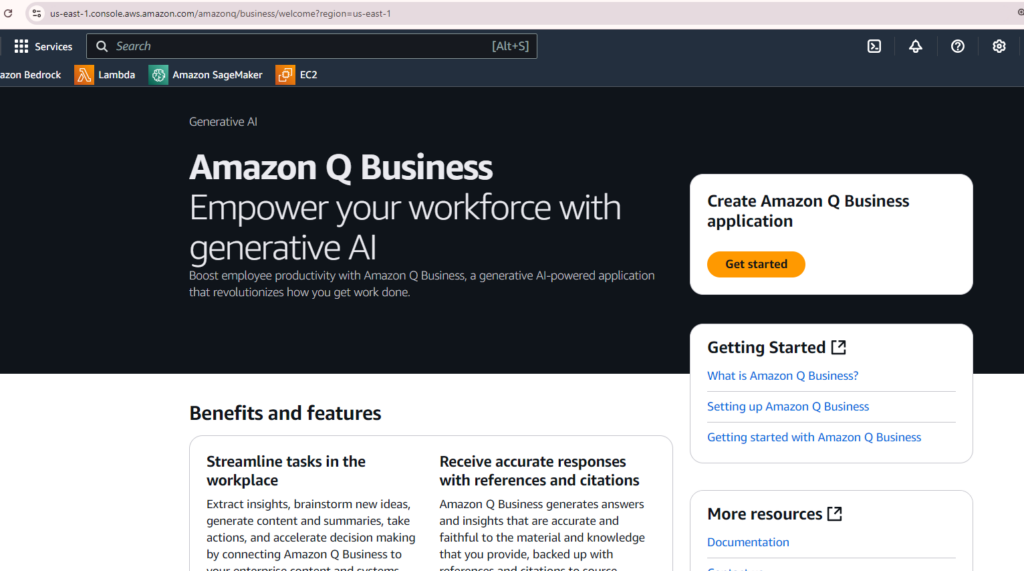
Step 2: Click “Create Application” to start the application process
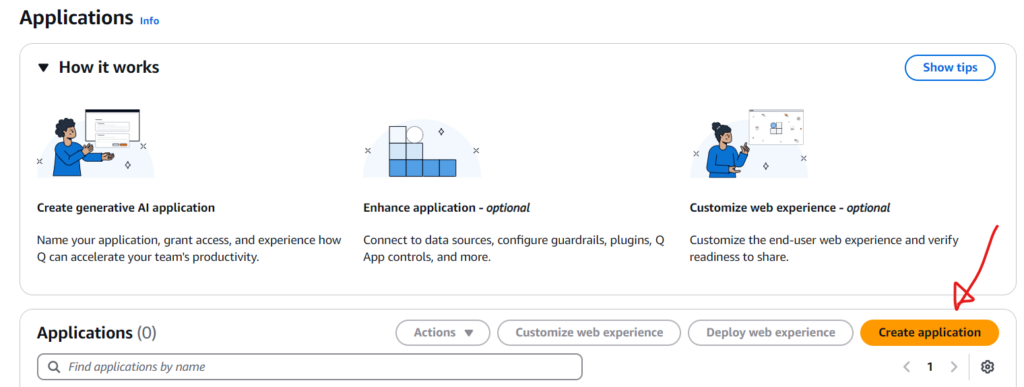
Step 3: Fill in the application name and select Default.

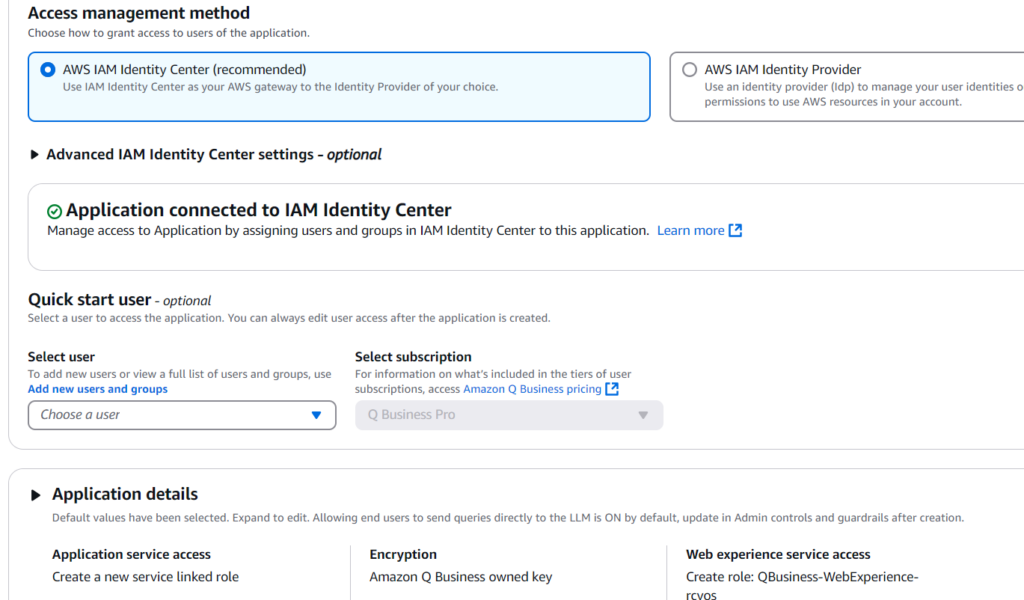
Step 4: After the application is created, the application page will be loaded. Click the “Data Sources” button to add the required data sources.

Step 5: On the Data Sources page, you need to select a crawler and index type. After selecting Index, we will also upload the same PDF (AWS database file) we used when exploring the Amazon Bedrock service.
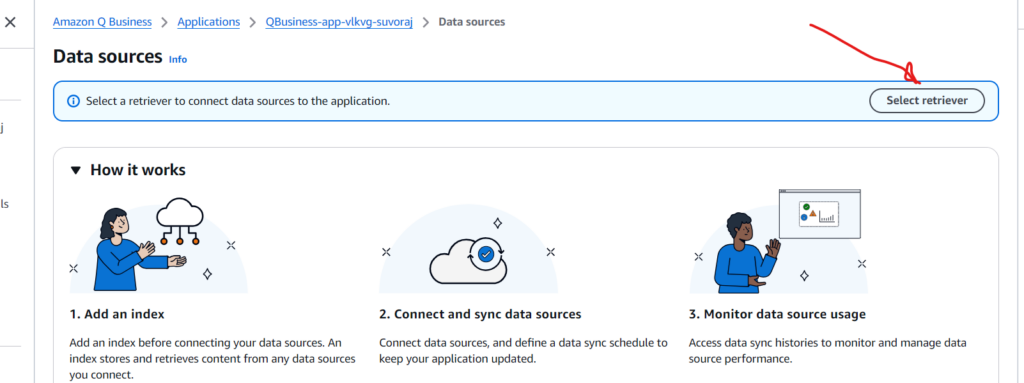
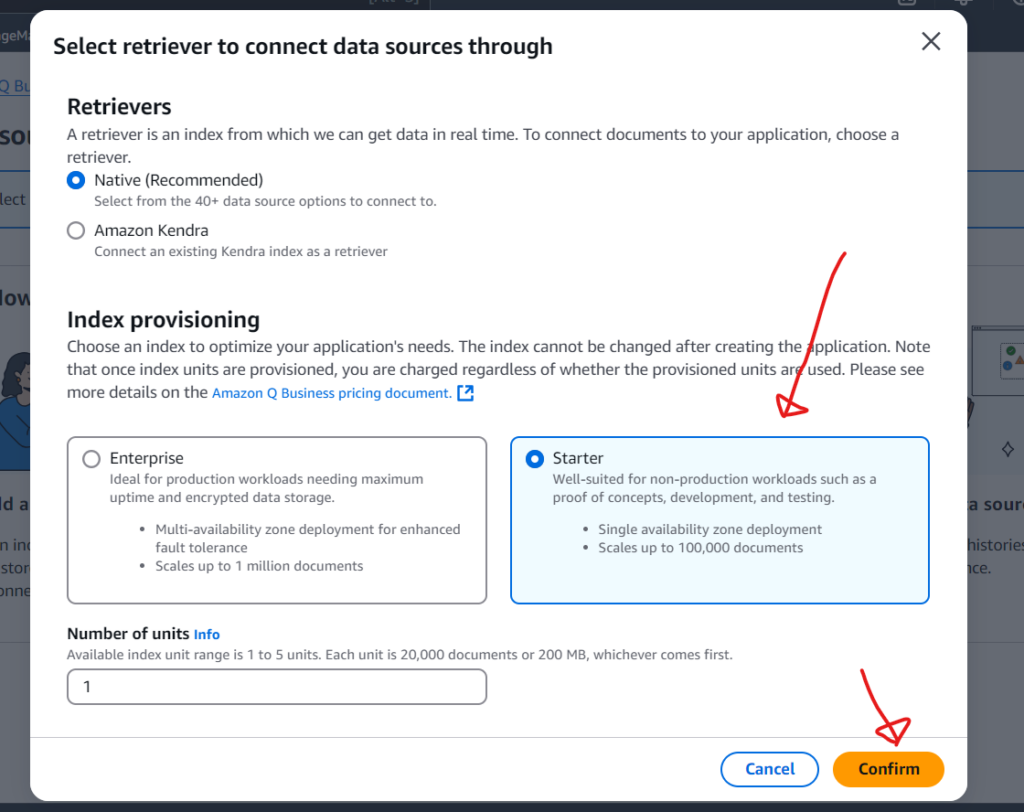

Upload pdf file
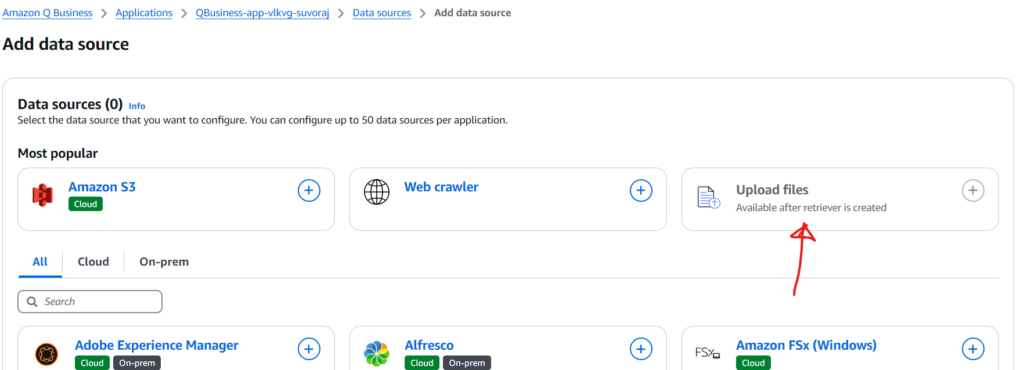

Once uploaded, you will see a success message in a green banner

Click “Finish” and wait for Q to process the file

Once processing is complete, the status will change to “Indexed”

Step 6: Before we test the QnA chat function on uploaded pdf files, we need to add a new “User/User Group”. Click “Manage user access” to add users to this application we created.

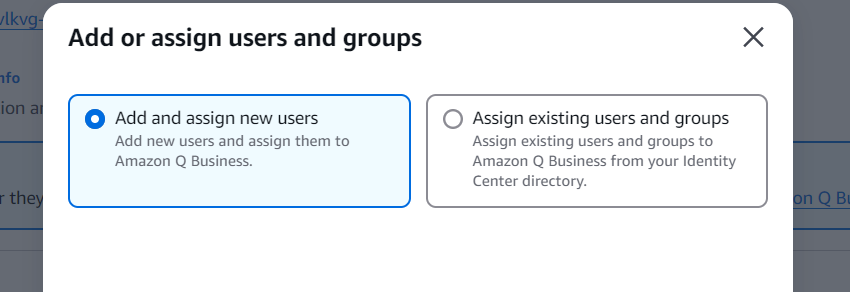
Fill in the details, such as username and other details (including email), and click “Confirm” to add the user to the subscription. You need to make sure to provide a valid email, as users will need to set a password by accepting an invitation in the email.
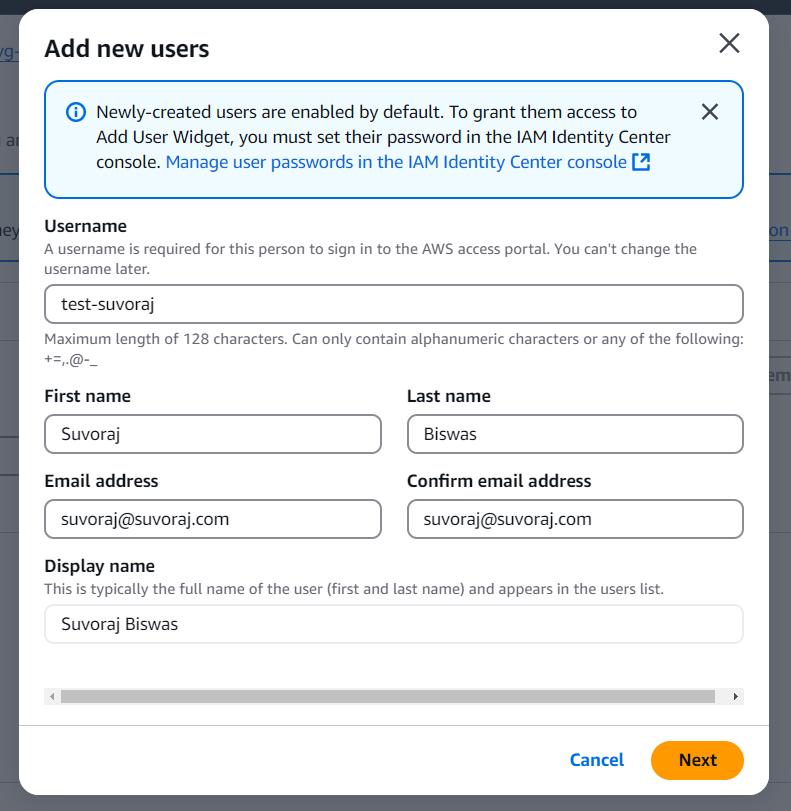
Step 7: This is the final testing phase where we will test the web-based QnA experience on uploaded files. To test the web experience, click the deployed URL. This will open a login page and log in using the username and password of the user we added earlier.
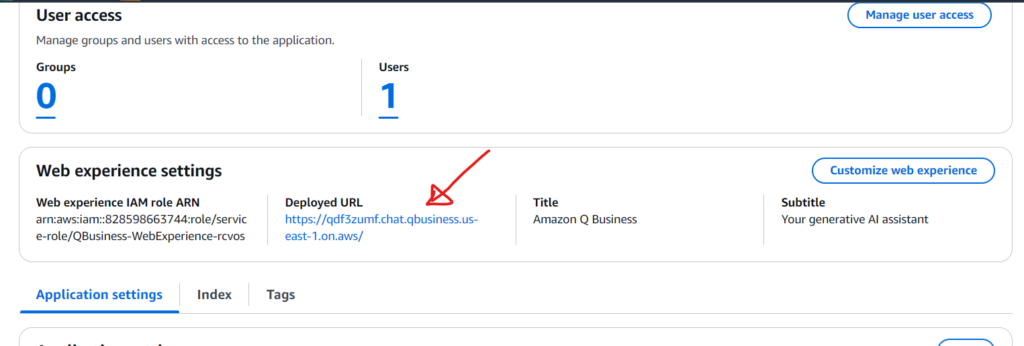
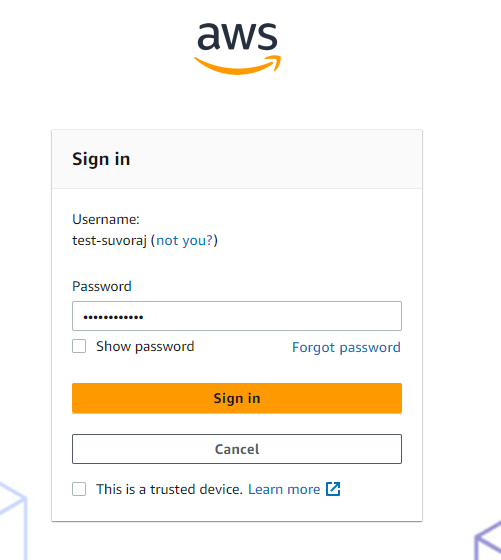
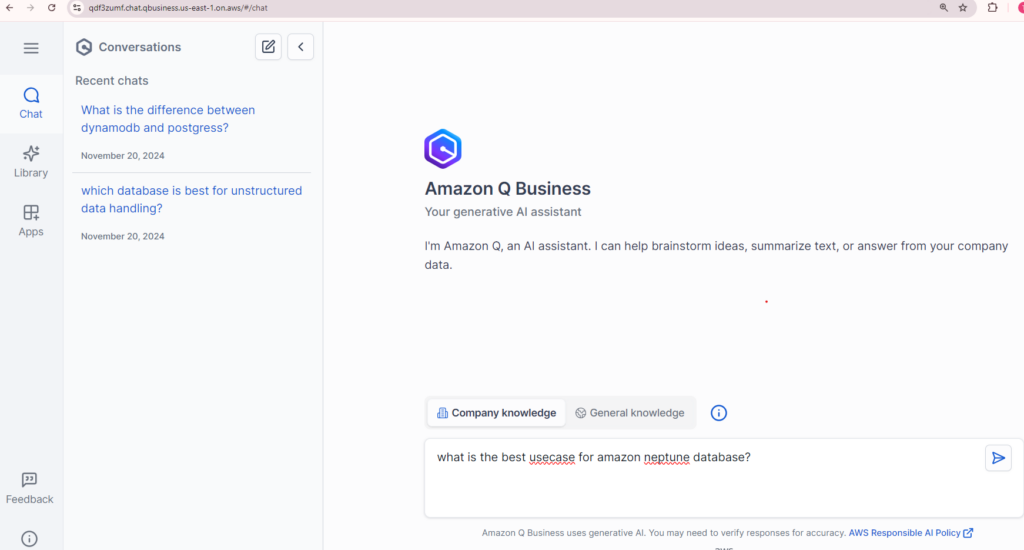
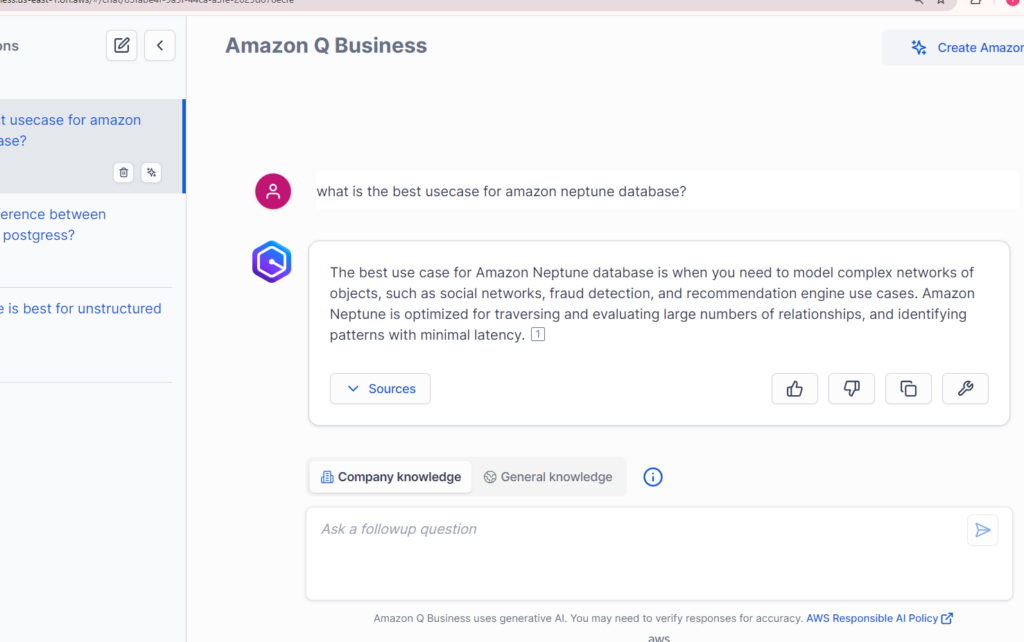
A quick walkthrough of integrating Amazon Q for Developers in the Visual Studio IDE
In the following steps, we will integrate Amazon Q for Developers in Visual Studio Code, one of the popular and widely used IDEs.
Step one: Launch Visual Studio code, then in the Extensions section, type and search for Amazon Q, then click the Install button to install Amazon Q.
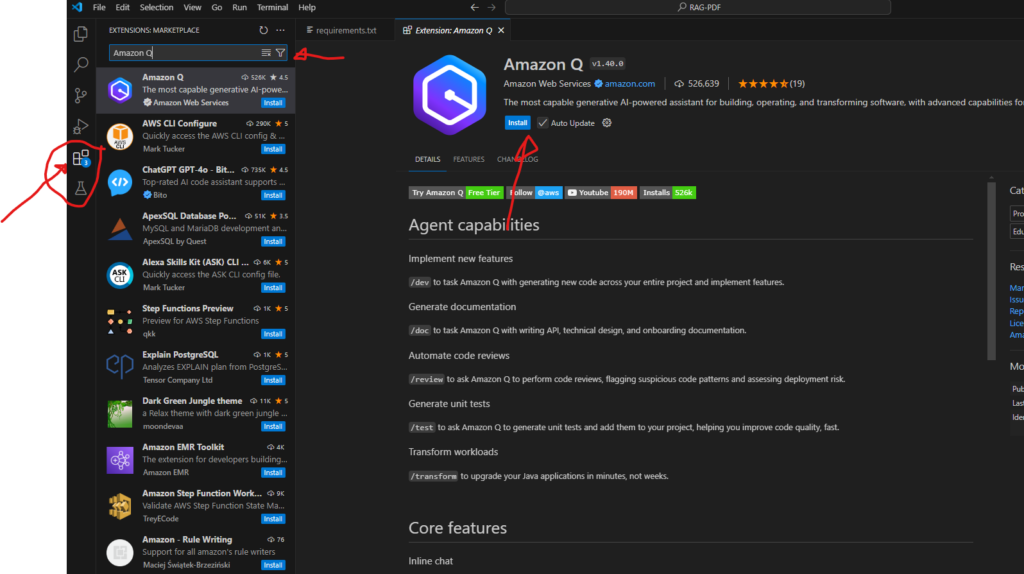
Step 2: After successfully installing Amazon Q in the IDE, the extension will appear on the left panel, but in order to use it correctly, we need to log in. We will use our AWS builder ID (free) to register and use it for non-commercial use cases.free to use”Select and click the Continue button, which will actually open the login page in the browser to log in.
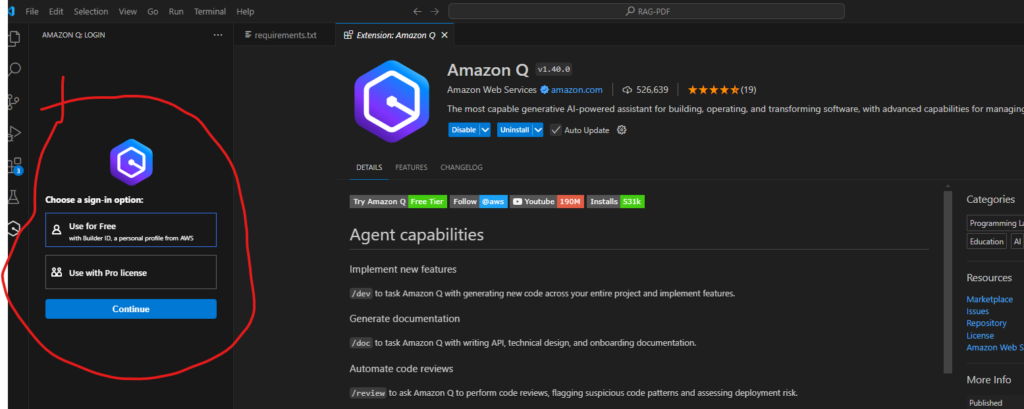
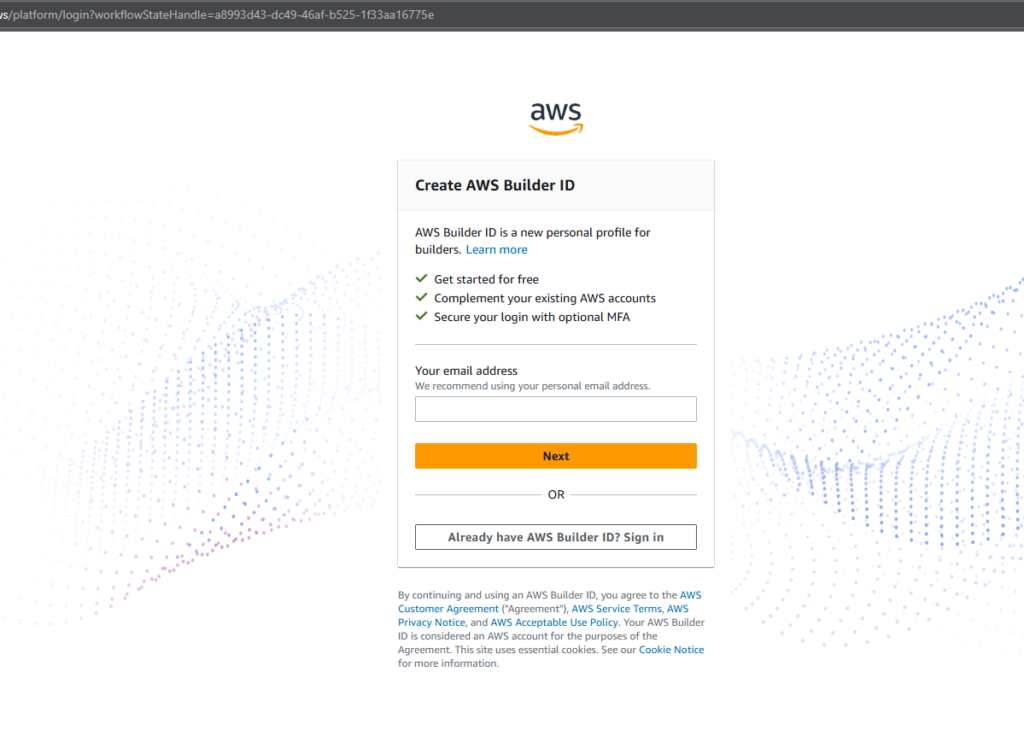
Step 3: After registering and successfully logging in, access is allowed Amazon Q As an external tool integrated with VSCode IDE.
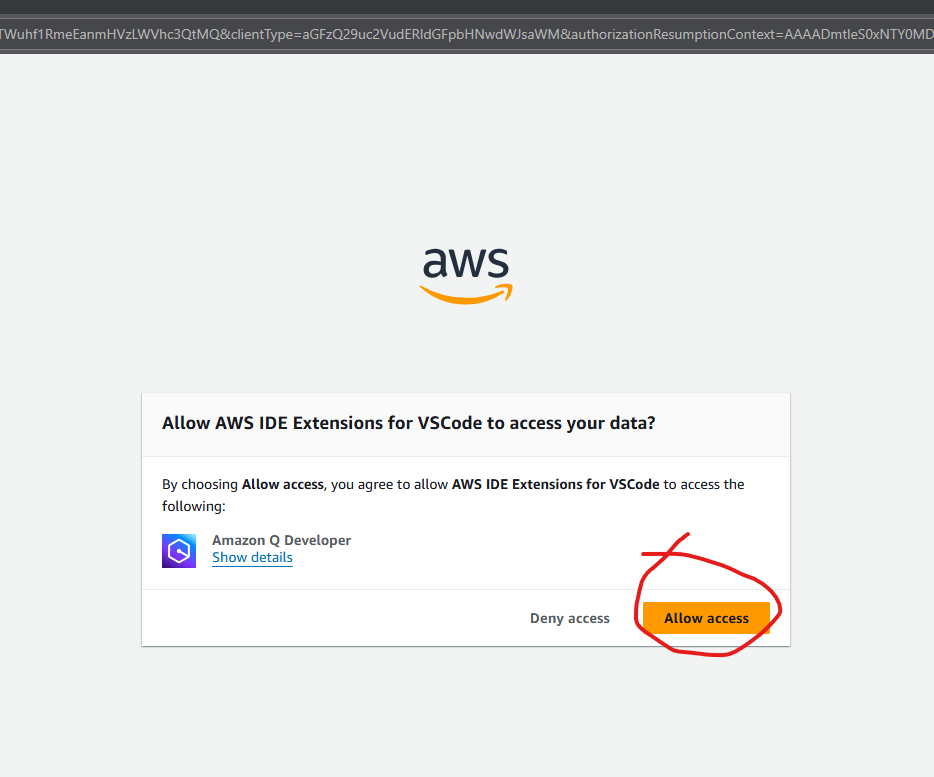
Step 4: After integrating Amazon Q into the VSCode IDE, the chat interface will look as follows.
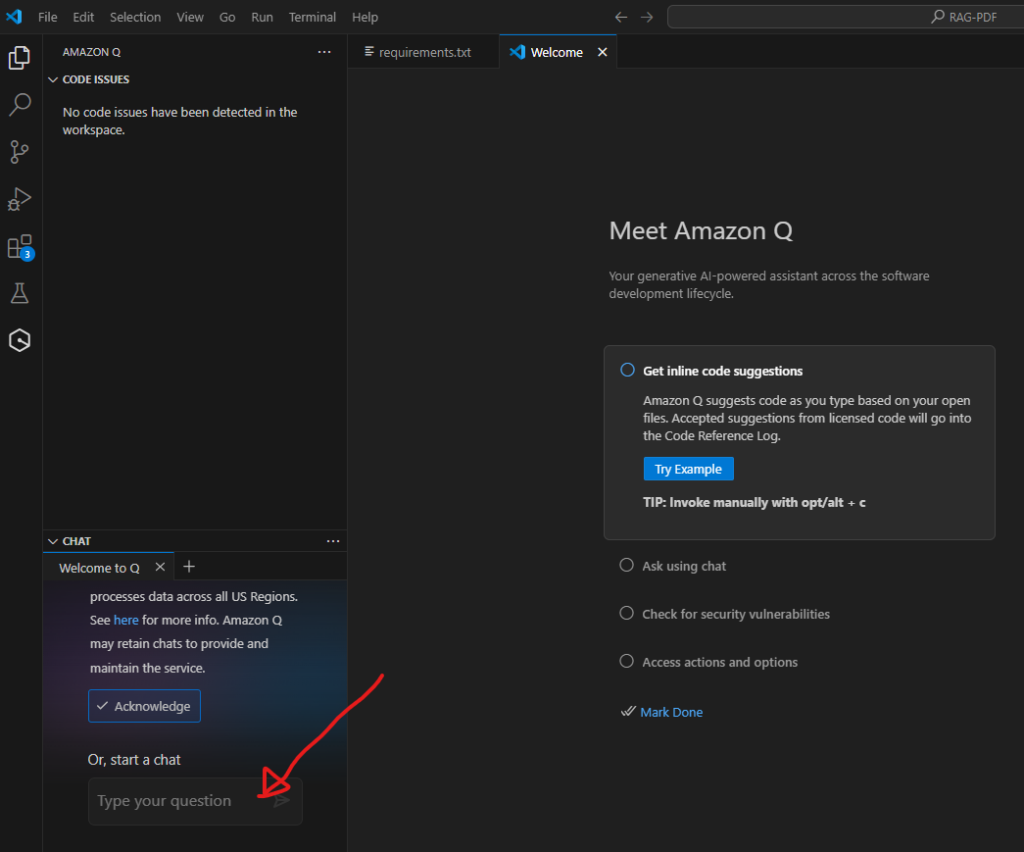
Step 5: Demo time. I asked Amazon Q to set up a CloudFormation script that sets up a Lambda that connects to an SNS topic. I asked this question in natural language, and Amazon Q was able to generate a CFT script, as shown below.
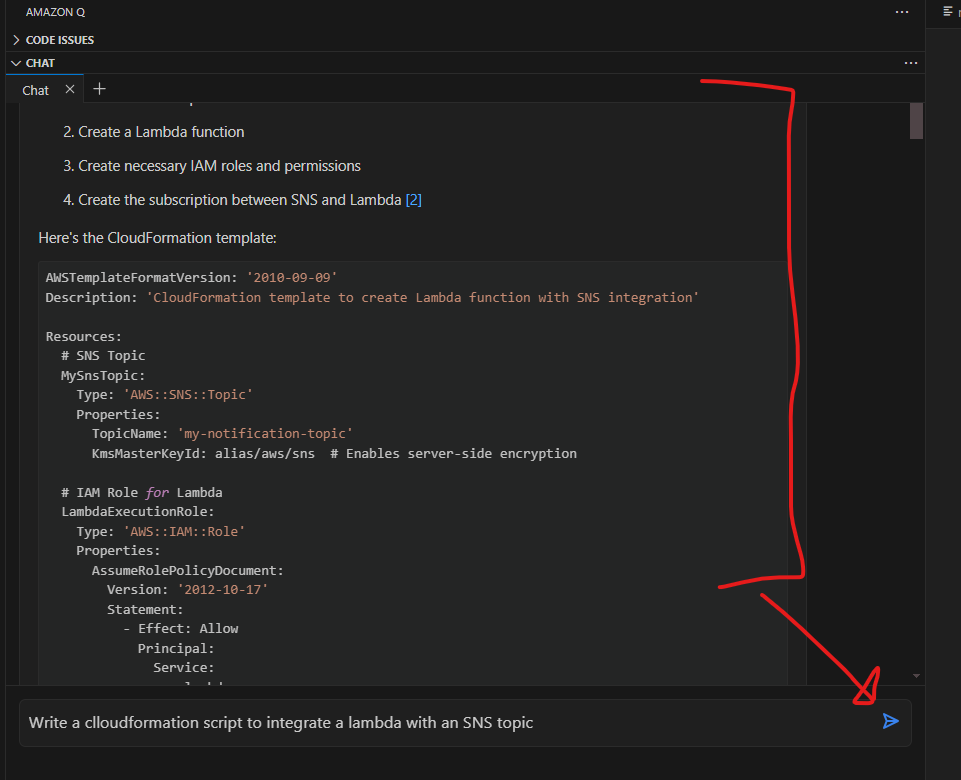
Summary:
In this article, we explore Amazon Q (business and developer editions) and gain insights into its key features and capabilities that leverage generative AI to improve business operations and developer productivity.
We also discussed how Amazon Q helps business users build intelligent solutions, such as Q&A, by seamlessly connecting to enterprise data sources.
In addition, we provide a step-by-step guide to building a simple Q&A application using Q-business and QnA to assist developers in the IDE, which demonstrates how Amazon Q simplifies the integration of AI into workflows. This allows businesses to effectively harness the power of advanced AI technologies. After completing all testing in the AWS console, don’t forget to delete the application.



